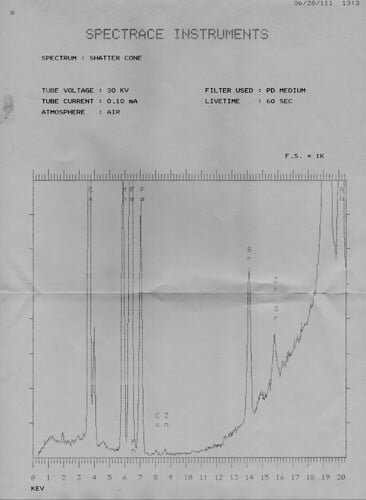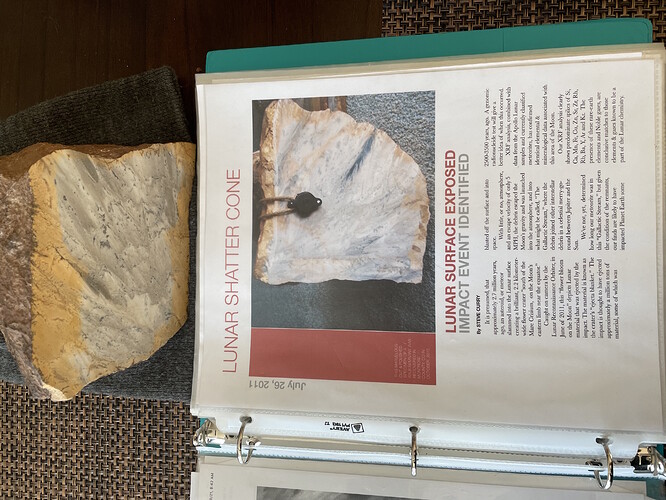Lunar Shatter Cones are the result of massive meteoritic impacts on the surface of Moon. Shatter Cones, either on the Earth, or Moon, are always indicative of asteroidal meteoritic impacts. Given the Earth’s vegetation, tectonics and erosion, most of Earth’s Shatter Cones are unrecognizable, but the Lunar surface is pockmarked with such features. (See attached LROC photos from NASA & ASU).
External signatures, along with elemental chemistry further confirms the facts that these Shatter Cones originated, not on Earth, but on our closest celestial neighbor. The internal signatures & patterns of these stones, as in the ejecta blanket patterns, adds certainty to the question of origin. (See attached story).
As to the elemental chemistry, these Lunar Shatter Cones are consistent with NASA’s Spectrometer & Magnetometer findings of “The Flower Bloom on the Moon,” a feature published by Phil Plait. (See Links: 1). A flower bloom on the Moon | Discover Magazine; 2). The Moon: Crash Course Astronomy #12 - YouTube). These elements include high levels of Fe, FeO, Ca, Al, Mn, Cu, Sr, Zr, Ba, Sr and Rh, with Rh being the rarest of all elements found on the crust of the Earth. (See attached CMU Spectrace Analysis & XRF data report).
The 3.485kg polished end-cut of our Lunar Shatter Cone specimen picture below is now for sale to members of the IGS community for a very reasonable price of $100.00 per gram. This same specimen, if sold in Tucson, or elsewhere, would bring an estimated $250.00 to $500.00 per gram!
This fine specimen comes complete with all paperwork, including GIA’s registry as “Dolomite.” IGS, itself, recognizes Dolomite & Anorthosite as collectable gemstones.



